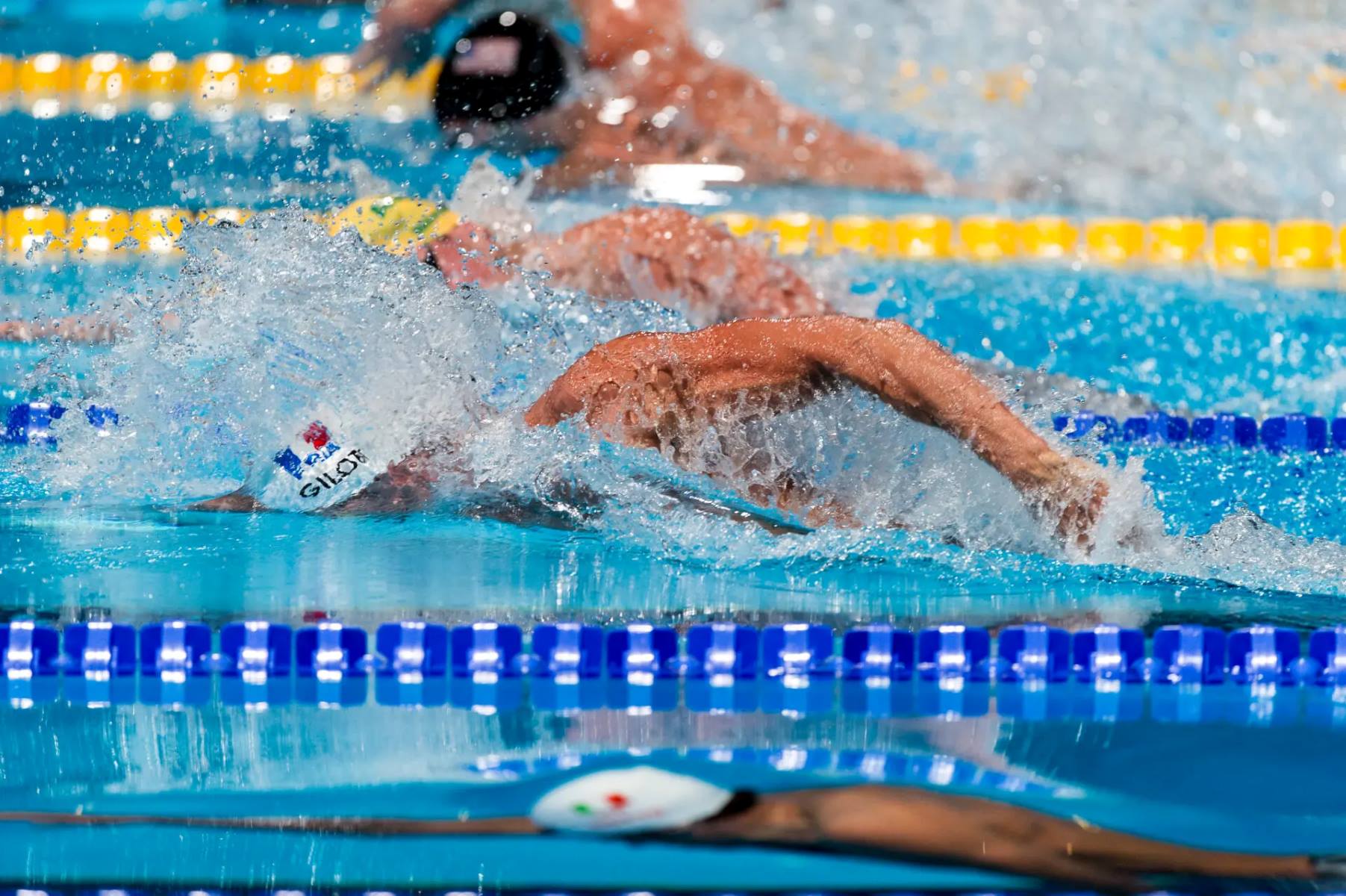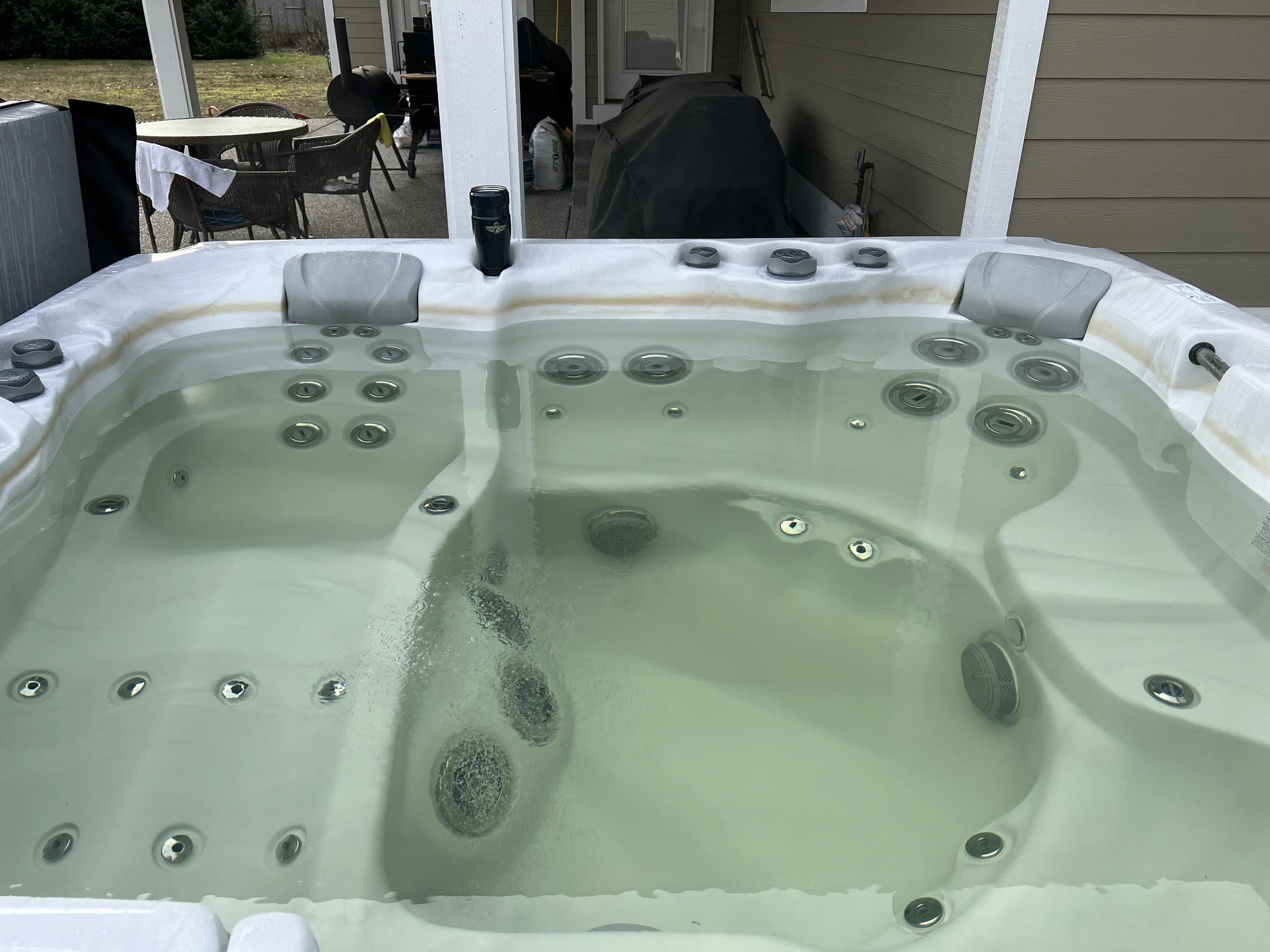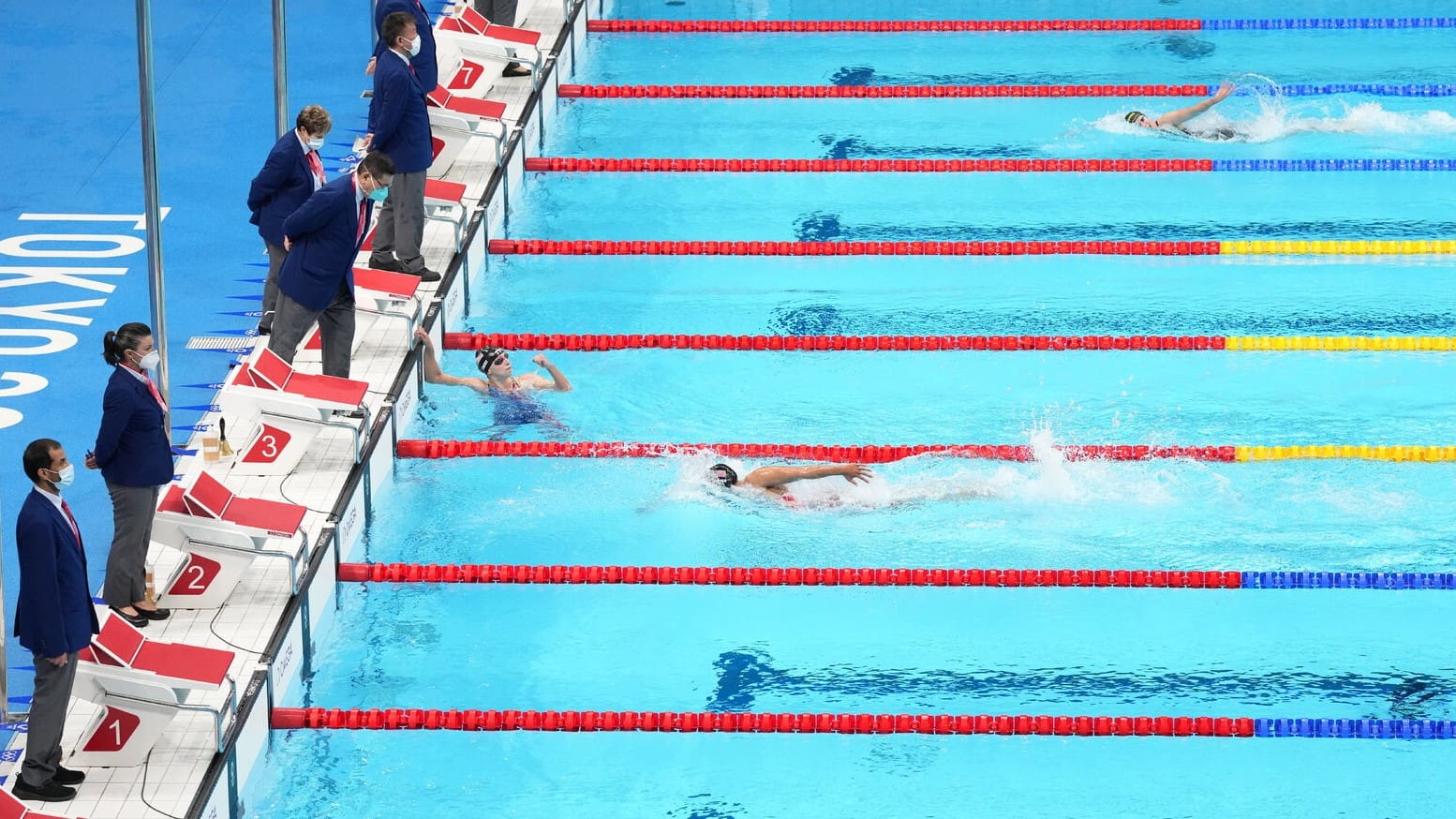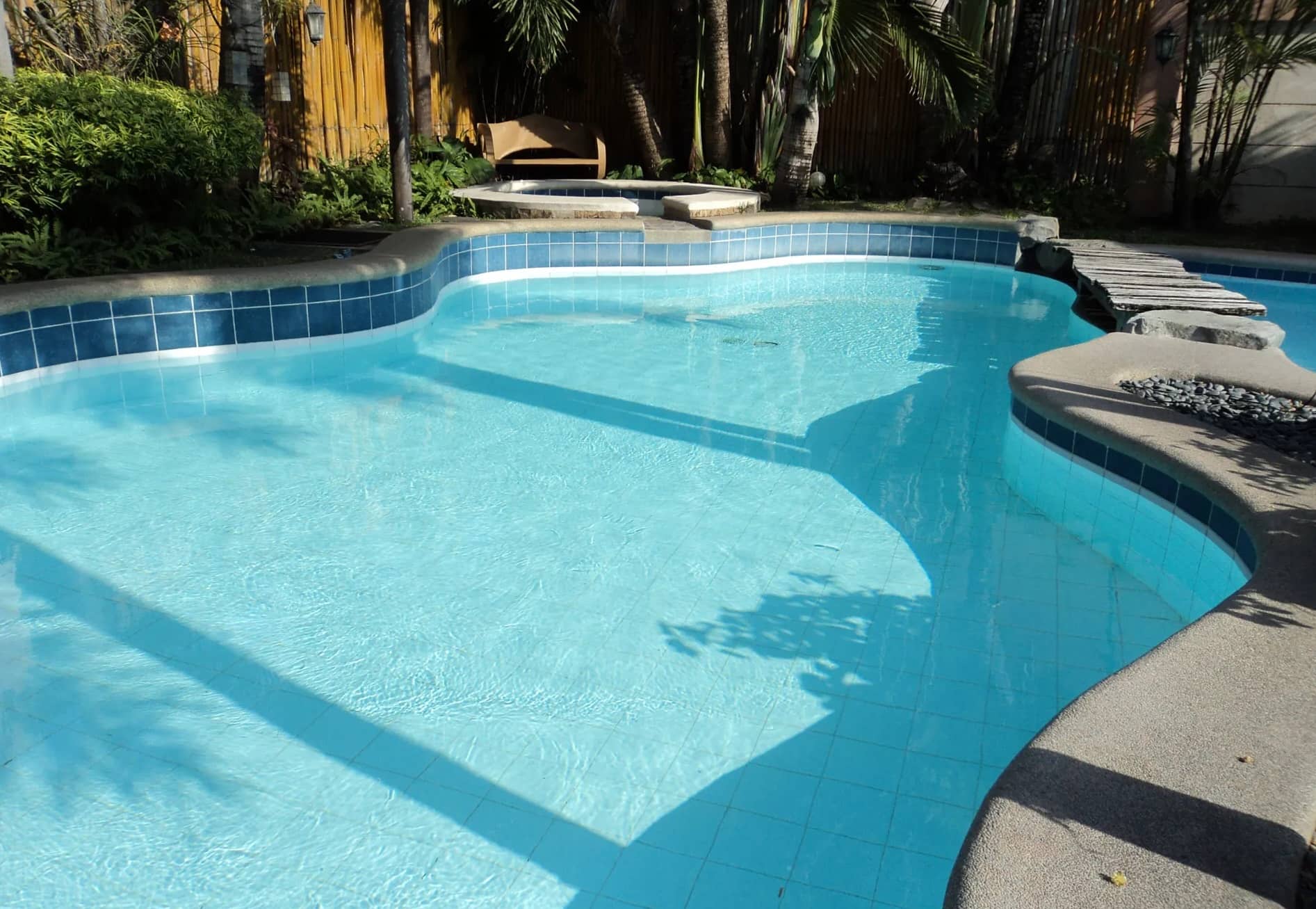Home>Gardening & Outdoor>Outdoor Recreation & Activities>How To Remove Iron From Swimming Pool Water


Outdoor Recreation & Activities
How To Remove Iron From Swimming Pool Water
Published: February 18, 2024
Learn effective methods for removing iron from swimming pool water in this comprehensive outdoor recreation and activities guide. Keep your pool water clean and clear!
(Many of the links in this article redirect to a specific reviewed product. Your purchase of these products through affiliate links helps to generate commission for Storables.com, at no extra cost. Learn more)
Introduction
Maintaining a sparkling and inviting swimming pool is a cherished goal for pool owners. However, the presence of iron in pool water can pose a significant challenge, leading to unsightly discoloration and potential damage to pool surfaces and equipment. Understanding the impact of iron in pool water, testing for its presence, and employing effective removal methods are essential for preserving the beauty and functionality of your pool.
Iron, a common contaminant in water, can enter pool water from various sources, including groundwater, irrigation systems, and metal pool equipment. When present in pool water, iron can manifest as a reddish-brown tint, causing staining on pool surfaces and imparting an unappealing hue to the water. Moreover, high iron levels can lead to the formation of rust-colored deposits and scale, compromising the aesthetics and cleanliness of the pool.
Addressing iron contamination in pool water requires a multi-faceted approach, encompassing accurate testing, targeted treatment, and preventive measures. By gaining insights into the impact of iron, learning how to test for its presence, and discovering effective removal methods, pool owners can safeguard their investment and ensure a delightful swimming experience for themselves and their guests.
In the subsequent sections, we will delve into the intricacies of dealing with iron in pool water, exploring the testing procedures, removal techniques, and preventive strategies that are instrumental in maintaining pristine and iron-free pool water. By acquiring a comprehensive understanding of these aspects, pool owners can proactively address iron-related challenges, preserving the allure and functionality of their beloved aquatic retreat.
Key Takeaways:
- Iron in pool water can cause unsightly stains, equipment damage, and algae growth. Regular testing and targeted removal methods, such as oxidation and sequestration, are crucial for maintaining a beautiful and functional pool.
- Preventing iron buildup in pool water is essential for preserving its pristine appearance. Proactive measures, including source water analysis, pH management, and filtration optimization, help create an inviting and enjoyable aquatic retreat.
Understanding the Impact of Iron in Pool Water
The presence of iron in pool water can have a profound impact on both the aesthetic appeal and structural integrity of the pool. When iron levels exceed recommended thresholds, the water may take on a reddish-brown hue, signaling the onset of unsightly discoloration. This discoloration can extend beyond the water itself, leading to staining on pool surfaces, including walls, floors, and steps. Additionally, iron-laden water can cause staining on pool liners, imparting an unattractive and neglected appearance to the pool.
Beyond its visual impact, iron in pool water can also precipitate operational challenges. The formation of rust-colored deposits and scale can occur, potentially clogging filters, impeding water circulation, and compromising the efficiency of pool equipment. Furthermore, high iron concentrations can result in the corrosion of metal components within the pool, including ladders, handrails, and pump fittings. This corrosion not only detracts from the pool's visual appeal but also poses a threat to the longevity and functionality of vital pool infrastructure.
Moreover, the presence of iron in pool water can lead to challenges in maintaining water chemistry balance. Iron can act as a catalyst for algae growth, fostering an environment conducive to the proliferation of these unwelcome aquatic organisms. This can necessitate increased chemical treatments and diligent maintenance efforts to combat the persistent presence of algae, adding to the operational and financial burdens associated with pool upkeep.
In summary, the impact of iron in pool water extends beyond mere visual aesthetics, encompassing structural integrity, equipment functionality, and water chemistry balance. Understanding the multifaceted repercussions of elevated iron levels is crucial for pool owners, as it underscores the importance of proactive testing, targeted treatment, and preventive measures to mitigate the adverse effects of iron contamination. By gaining a comprehensive awareness of these implications, pool owners can take informed steps to safeguard their pool against the detrimental impact of iron, ensuring a pristine and enjoyable aquatic environment for all to relish.
Testing for Iron in Pool Water
Accurate testing for the presence of iron in pool water is a fundamental step in addressing potential contamination and implementing targeted remediation measures. Pool owners can employ various testing methods to ascertain the iron levels, thereby gaining valuable insights into the extent of contamination and the subsequent course of action.
One of the primary testing approaches involves utilizing iron-specific test kits designed for pool water analysis. These kits typically include reagents that react with iron ions, producing color changes that indicate the concentration of iron present. By following the instructions provided with the test kit, pool owners can obtain quantitative or qualitative measurements of iron levels, enabling them to gauge the severity of contamination.
Furthermore, pool water can be tested using electronic water testing devices equipped with iron-detecting capabilities. These advanced tools offer the convenience of swift and precise iron level assessments, providing digital readouts or visual indicators to convey the test results. Electronic testing devices are favored for their accuracy and user-friendly operation, empowering pool owners to swiftly monitor iron levels and make informed decisions regarding treatment and maintenance.
In addition to dedicated iron testing, comprehensive water analysis through professional pool water testing services can offer a holistic assessment of iron levels alongside other crucial water parameters. These services, often available through pool supply stores or specialized laboratories, utilize advanced analytical techniques to provide a comprehensive profile of the pool water's composition. By leveraging professional testing services, pool owners can gain a nuanced understanding of iron contamination and its interplay with other water quality factors, facilitating a more informed and strategic approach to remediation.
Regular and systematic testing for iron in pool water is imperative for proactive maintenance and early detection of contamination. By integrating reliable testing methods into their pool maintenance routines, owners can promptly identify fluctuations in iron levels, enabling timely intervention to prevent staining, equipment damage, and water chemistry imbalances. Through vigilant testing and vigilant monitoring, pool owners can uphold the integrity and allure of their pool, ensuring a delightful and pristine aquatic retreat for all to enjoy.
Methods for Removing Iron from Pool Water
Addressing iron contamination in pool water necessitates the implementation of effective removal methods to restore water clarity and prevent unsightly staining. Pool owners can avail themselves of various techniques to eliminate iron from pool water, thereby preserving the pool's visual appeal and structural integrity.
1. Oxidation and Filtration
Oxidation, often achieved through the use of chlorine or non-chlorine shock treatments, can facilitate the precipitation of iron from the water, rendering it more amenable to filtration. Once oxidized, the iron forms insoluble particles that can be effectively captured by the pool's filtration system. Regular backwashing of the filter can aid in removing accumulated iron particles, thereby enhancing the water's clarity and reducing the risk of staining.
Read more: How To Remove A Swimming Pool
2. Sequestration
Sequestration involves the use of specialized chemical products designed to bind with iron ions, thereby preventing them from precipitating and causing staining. These sequestering agents form stable complexes with iron, effectively rendering it inert and unable to manifest as visible stains. Regular addition of sequestrants to the pool water can help mitigate the impact of dissolved iron, safeguarding pool surfaces and maintaining water clarity.
3. Chelation
Chelating agents, such as EDTA (ethylenediaminetetraacetic acid) or HEDP (1-hydroxyethylidene-1,1-diphosphonic acid), can be employed to sequester iron and prevent its adverse effects. Chelating agents form strong complexes with iron ions, effectively inhibiting their ability to cause staining or scale formation. These products are available in liquid or granular form and can be added directly to the pool water, offering a targeted approach to managing iron contamination.
4. Ascorbic Acid Treatment
Ascorbic acid, commonly known as vitamin C, can serve as a potent agent for removing iron stains from pool surfaces. By applying a concentrated ascorbic acid solution directly to affected areas, pool owners can effectively reduce and eliminate existing iron stains, restoring the pristine appearance of the pool. This targeted treatment can be particularly beneficial for addressing localized staining resulting from elevated iron levels.
5. Professional Assistance
In cases of severe or persistent iron contamination, seeking professional assistance from pool maintenance experts or water treatment specialists may be advisable. These professionals can leverage advanced techniques, such as chemical flocculation or specialized filtration, to address challenging iron issues and restore water clarity. Their expertise and resources can prove invaluable in tackling stubborn iron problems, ensuring the effective removal of iron from pool water.
By employing these methods in a strategic and proactive manner, pool owners can effectively combat iron contamination, safeguarding the visual appeal and structural integrity of their pool. Regular maintenance and diligent application of these removal techniques can help maintain pristine and iron-free pool water, fostering an inviting and enjoyable aquatic environment for all to relish.
Preventing Iron Buildup in Pool Water
Preventing the buildup of iron in pool water is paramount to maintaining a pristine and inviting aquatic environment. By implementing proactive measures and adhering to diligent maintenance practices, pool owners can effectively mitigate the risk of iron contamination, preserving the visual allure and structural integrity of their pool.
1. Source Water Analysis
Conducting a comprehensive analysis of the source water that fills the pool is an essential first step in preventing iron buildup. By understanding the composition of the source water, including its iron content, pool owners can anticipate potential contamination and tailor their preventive strategies accordingly. Professional water testing services can provide valuable insights into the source water's iron levels, empowering pool owners to make informed decisions regarding treatment and maintenance.
2. pH and Alkalinity Management
Maintaining optimal pH and alkalinity levels in pool water is instrumental in preventing iron buildup. High acidity can exacerbate the corrosion of metal components, leading to the release of iron into the water. By diligently monitoring and adjusting pH and alkalinity levels, pool owners can create an environment that discourages the dissolution of iron, thereby reducing the risk of contamination. Regular testing and proactive adjustments are essential for sustaining balanced water chemistry.
3. Filtration and Circulation
Effective filtration and robust water circulation play a pivotal role in preventing iron buildup. A well-maintained filtration system can capture suspended iron particles, preventing them from settling and causing staining. Additionally, consistent water circulation helps disperse dissolved iron, minimizing the likelihood of localized accumulation. Regular filter maintenance, including backwashing and cleaning, is crucial for optimizing filtration efficiency and mitigating the impact of iron contamination.
4. Sequestration and Chelation
Proactive use of sequestrants and chelating agents can aid in preventing iron buildup by effectively managing dissolved iron ions. These specialized chemical products form stable complexes with iron, rendering it inert and less prone to causing staining or scale formation. Regular addition of sequestrants and chelating agents can help maintain iron in a controlled state, minimizing its impact on pool surfaces and water clarity.
5. Source Water Pre-Treatment
In instances where the source water exhibits elevated iron levels, pre-treatment methods, such as filtration or chemical oxidation, can be employed to mitigate iron contamination before it enters the pool. Installing specialized filtration systems or utilizing oxidation techniques can help remove or precipitate iron from the source water, reducing the risk of introducing iron into the pool. This proactive approach can significantly diminish the likelihood of iron buildup and staining.
By integrating these preventive measures into their pool maintenance regimen, pool owners can effectively thwart the buildup of iron in pool water, preserving the pristine appearance and functionality of their pool. Diligent monitoring, proactive treatment, and strategic management of water quality parameters are essential for creating an environment that is inhospitable to iron contamination, ensuring a captivating and enjoyable aquatic retreat for all to savor.
Conclusion
In conclusion, the presence of iron in pool water poses multifaceted challenges that extend beyond mere visual aesthetics, encompassing structural integrity, equipment functionality, and water chemistry balance. Understanding the implications of elevated iron levels is crucial for pool owners, as it underscores the importance of proactive testing, targeted treatment, and preventive measures to mitigate the adverse effects of iron contamination.
Accurate testing for the presence of iron in pool water is a fundamental step in addressing potential contamination and implementing targeted remediation measures. By employing various testing methods, including iron-specific test kits, electronic water testing devices, and professional water testing services, pool owners can gain valuable insights into the extent of contamination and make informed decisions regarding treatment and maintenance.
Effective removal methods, such as oxidation and filtration, sequestration, chelation, ascorbic acid treatment, and professional assistance, play a pivotal role in eliminating iron from pool water, thereby preserving the pool's visual appeal and structural integrity. By employing these methods in a strategic and proactive manner, pool owners can effectively combat iron contamination, safeguarding the visual appeal and functionality of their pool.
Preventing the buildup of iron in pool water is paramount to maintaining a pristine and inviting aquatic environment. By implementing proactive measures, such as source water analysis, pH and alkalinity management, filtration and circulation optimization, proactive use of sequestrants and chelating agents, and source water pre-treatment, pool owners can effectively mitigate the risk of iron contamination, preserving the visual allure and structural integrity of their pool.
In essence, by integrating accurate testing, effective removal methods, and proactive preventive measures into their pool maintenance routines, pool owners can proactively address iron-related challenges, preserving the allure and functionality of their beloved aquatic retreat. This comprehensive approach ensures a delightful and pristine aquatic environment for all to relish, free from the detrimental impact of iron contamination.
Frequently Asked Questions about How To Remove Iron From Swimming Pool Water
Was this page helpful?
At Storables.com, we guarantee accurate and reliable information. Our content, validated by Expert Board Contributors, is crafted following stringent Editorial Policies. We're committed to providing you with well-researched, expert-backed insights for all your informational needs.













0 thoughts on “How To Remove Iron From Swimming Pool Water”